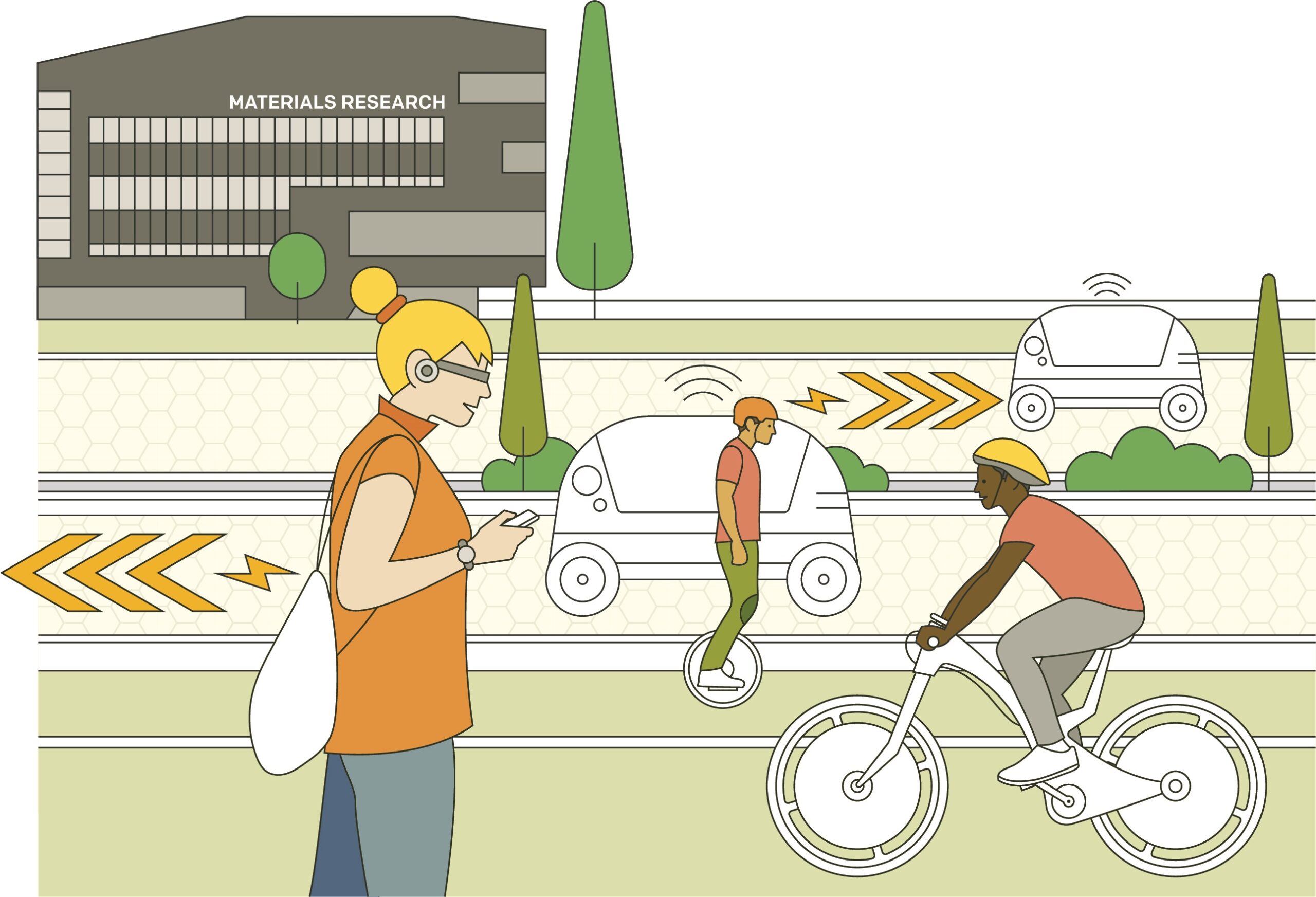A new report from the Greater Manchester Local Enterprise Partnership (GM LEP) envisages how Greater Manchester’s expertise in advanced materials could help shape the cities of the future.
‘Material Gains: Building Better Cities for People and the Planet’ imagines Greater Manchester in 2038 as a city-region realising fairer and greener economic growth enabled by advanced materials.
The report looks ahead to 2038 and a future where advanced materials have had a transformational impact – on how we travel, generate energy and construct buildings, as well as their effect on sectors like manufacturing, food production and healthcare.
Leading commentators from the fields of science, industry and academia also feature, after participating in a roundtable discussion in partnership with GM LEP, MIDAS and The University of Manchester and hosted by Alok Jha, science correspondent with The Economist.
Its cover features a new illustration from local illustrator Barney Ibbotson, detailing some of the changes we might see in Greater Manchester by 2038.
Lou Cordwell, Chair of the Greater Manchester Local Enterprise Partnership (GM LEP), said: “This report is full of incredible insight provided by some of the key thinkers, organisations and companies involved in advanced materials.
“By 2038 we could see cities transformed – a future of vertical urban farms; rainwater purification units utilising graphene membranes; road surfaces which defy potholes and charge the batteries in the driverless, lightweight vehicles which pass along them.
“The air is clean, and people have a vast array of career opportunities in innovative industries that have not yet been imagined. Transportation is net carbon neutral, integrated, affordable and efficient, and new architectural structures are possible due to enhanced building materials.
“Innovation is at the heart of our Economic Vision for Greater Manchester. Creating new products and services built around advanced materials will generate opportunities for thousands of new, skilled jobs in industries which are only now being imagined.”
Justin Kelly, GM LEP board member and member of the Graphene, Advanced Materials and Manufacturing Alliance (GAMMA), said: “Greater Manchester has the potential to make a significant impact in advanced materials innovation, as part of a wider advanced materials and manufacturing supercluster across the North.
“In this report we highlight the research carried out at our world-leading institutions which has then been taken forward by pioneering companies. These innovations create jobs and growth while also addressing some of the most pressing global challenges.
“The report is intended to stimulate further conversation about Greater Manchester’s role in influencing the future for global cities, while also considering how this could bring skilled jobs and economic benefits to our city-region.”
Professor Luke Georghiou, Deputy President and Deputy Vice-Chancellor at The University of Manchester, said: “Advanced materials are a pervasive technology fundamental to progress in so many areas.
“The excitement of digital innovation sometimes obscures the underpinning material world we inhabit. This white paper demonstrates how sustainable growth in key sectors is being advanced by the remarkable configuration of research and manufacturing capability that we have in Greater Manchester which, over time, will also be reflected in high quality jobs and better quality of life for our citizens.”
The city-region’s efforts will be underpinned by Innovation Greater Manchester – a blueprint for a partnership with Government to stimulate R&D investment and level up the North, generating a £7 billion economic benefit and creating up to 100,000 jobs across the city-region.
The report has been produced by the GM LEP in partnership with MIDAS, Greater Manchester’s inward investment agency, and Graphene@Manchester, part of The University of Manchester.

Greater Manchester 2038 as imagined by illustrator and designer Barney Ibbotson.
Barney Ibbotson has produced the cover art for Material Gains: Building Better Cities for People and the Planet.
His work images a future of vertical urban farms; rainwater purification units utilising graphene membranes; road surfaces which defy potholes and charge the batteries in the driverless lightweight vehicles which pass along them.
The air is clean and people have a vast array of career opportunities in innovative industries that have not yet been imagined.
Transportation is net carbon neutral, integrated affordable and efficient. Drones – built in the image of Manchester’s famous worker bees – buzz through the sky.
The cityscape remains familiar but incredible new architectural structures are possible due to enhanced building materials which are lighter, stronger and conduct heat and power.
The legendary space elevator is a reality.
Healthcare has been transformed by the ability to produce intricate replacement body structures.
As a result, Greater Manchester is a magnet for talent and investment and the city region’s efforts to tackle global challenges is supporting the fight against climate change.
